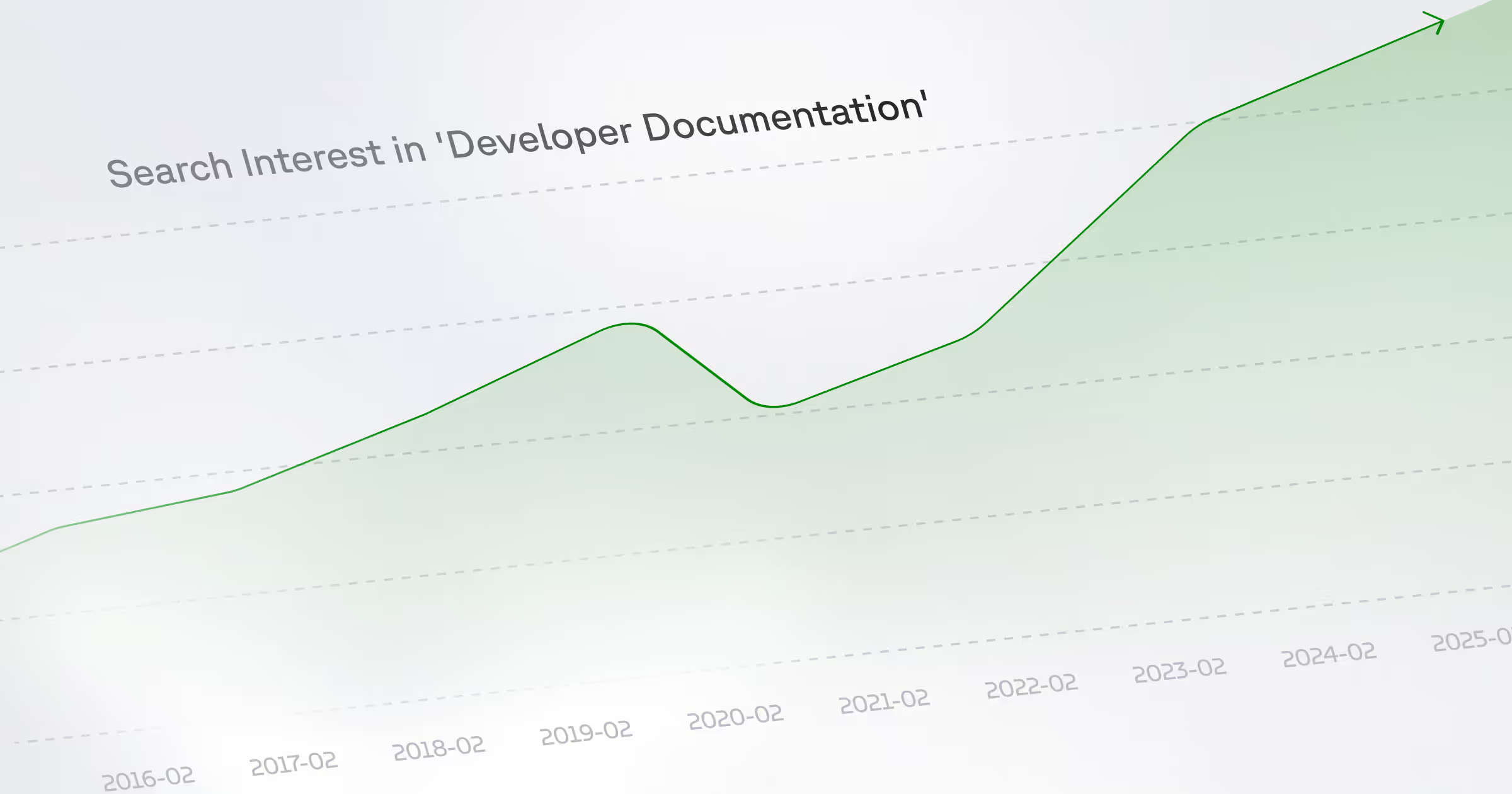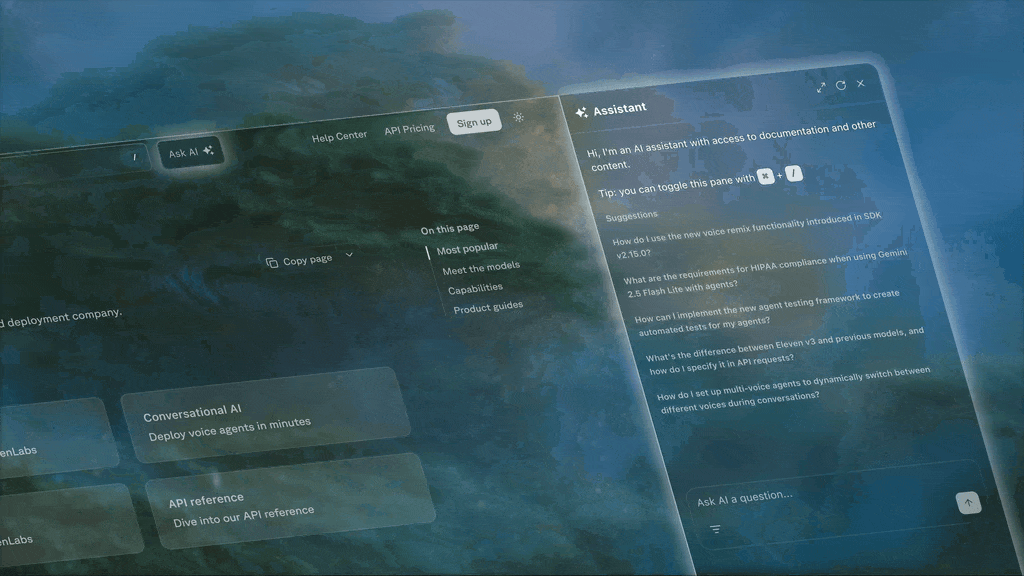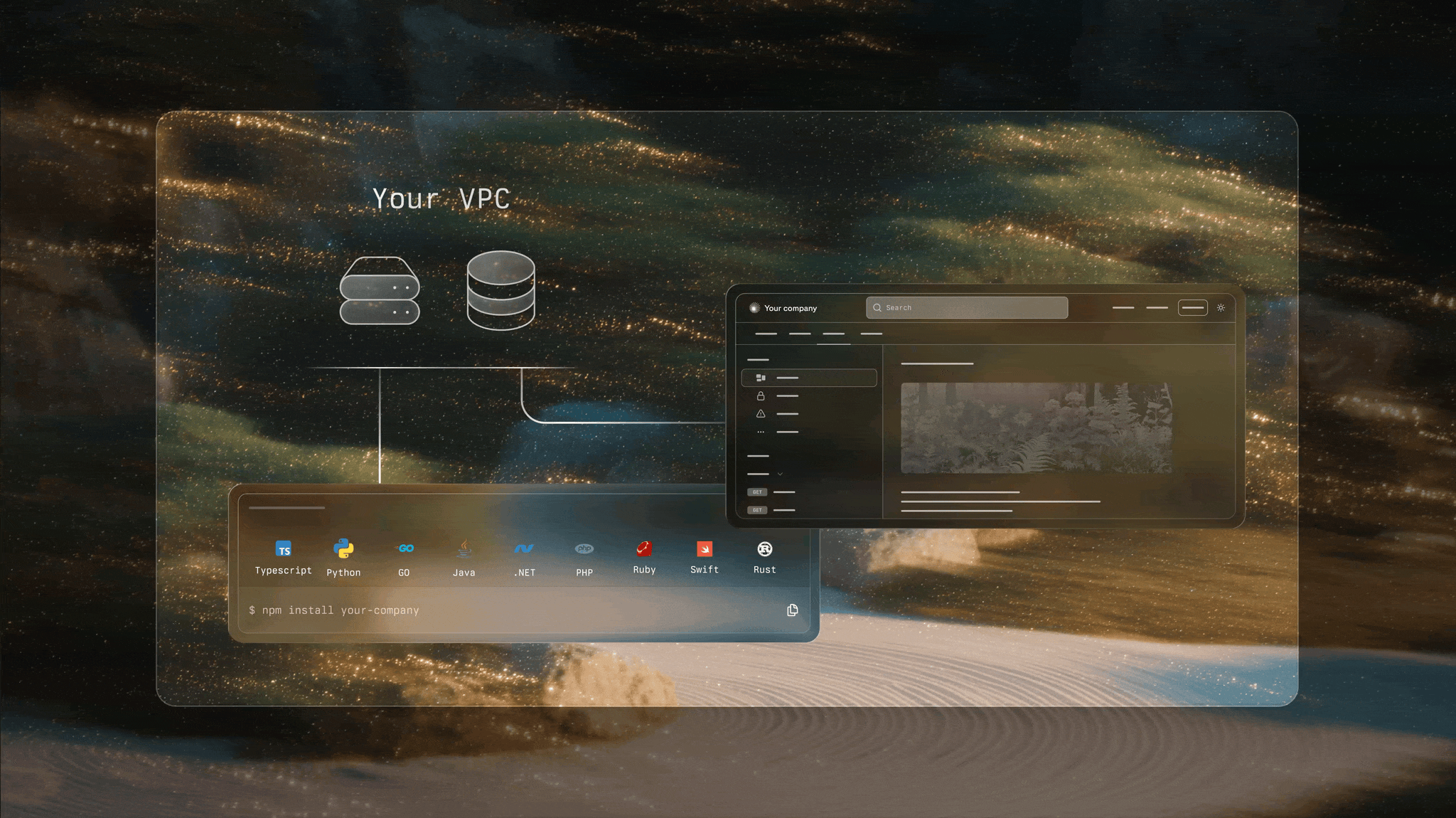Interest in developer documentation has exploded in recent years. What used to be an afterthought or a final checkbox before a launch is now seen as a critical part of the developer experience, influencing everything from product adoption to go-to-market strategy.
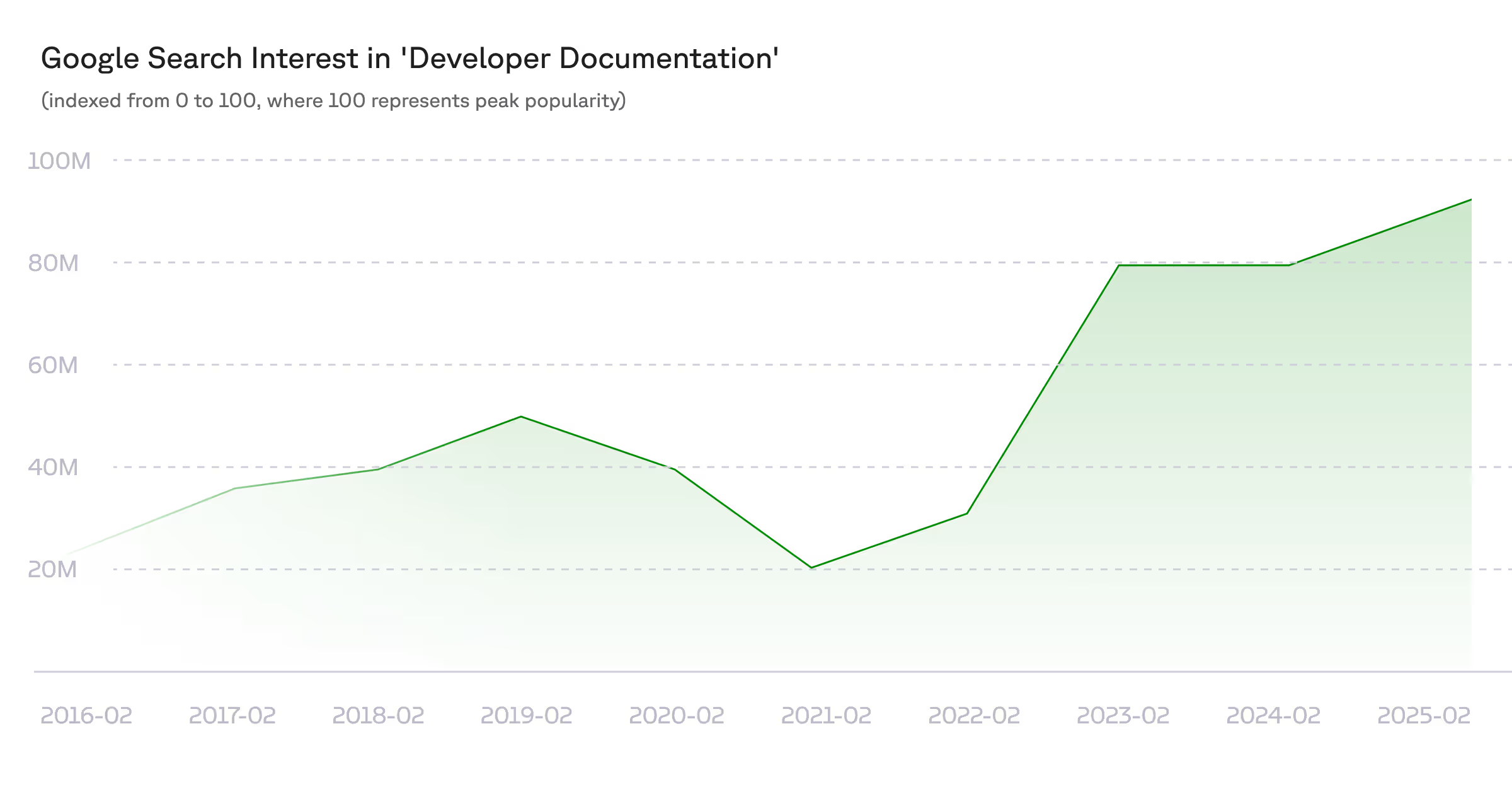
This shift isn’t happening in a vacuum. It’s the result of broader changes in how software is built, bought, and scaled. Documentation is becoming more important because:
- More APIs are being developed than ever before
- Every company is becoming a software company and needs documentation
- Docs have become the foundation for other developer experience products (like SDK generation, AI search, and onboarding flows)
- Docs are increasingly becoming the sales rep and AI interface for agents
In this article, we’ll break down each of these forces driving the rise of documentation and explore what it means for the future of building for developers.
Why documentation is increasingly important in 2025 (and beyond)
1) More software is being developed
It’s never been easier to build software. Thanks to open-source ecosystems, cloud infrastructure, and an explosion of developer tools, the pace of software development has accelerated dramatically over the past decade. Today, engineers (and vibe coders) can go from idea to deployment in hours, not months.
The growth is staggering. Over the last decade:
- The number of developers on GitHub has grown more than 10x
- GitHub repositories have increased over 40x
- NPM packages have surged from near zero to over 2 million
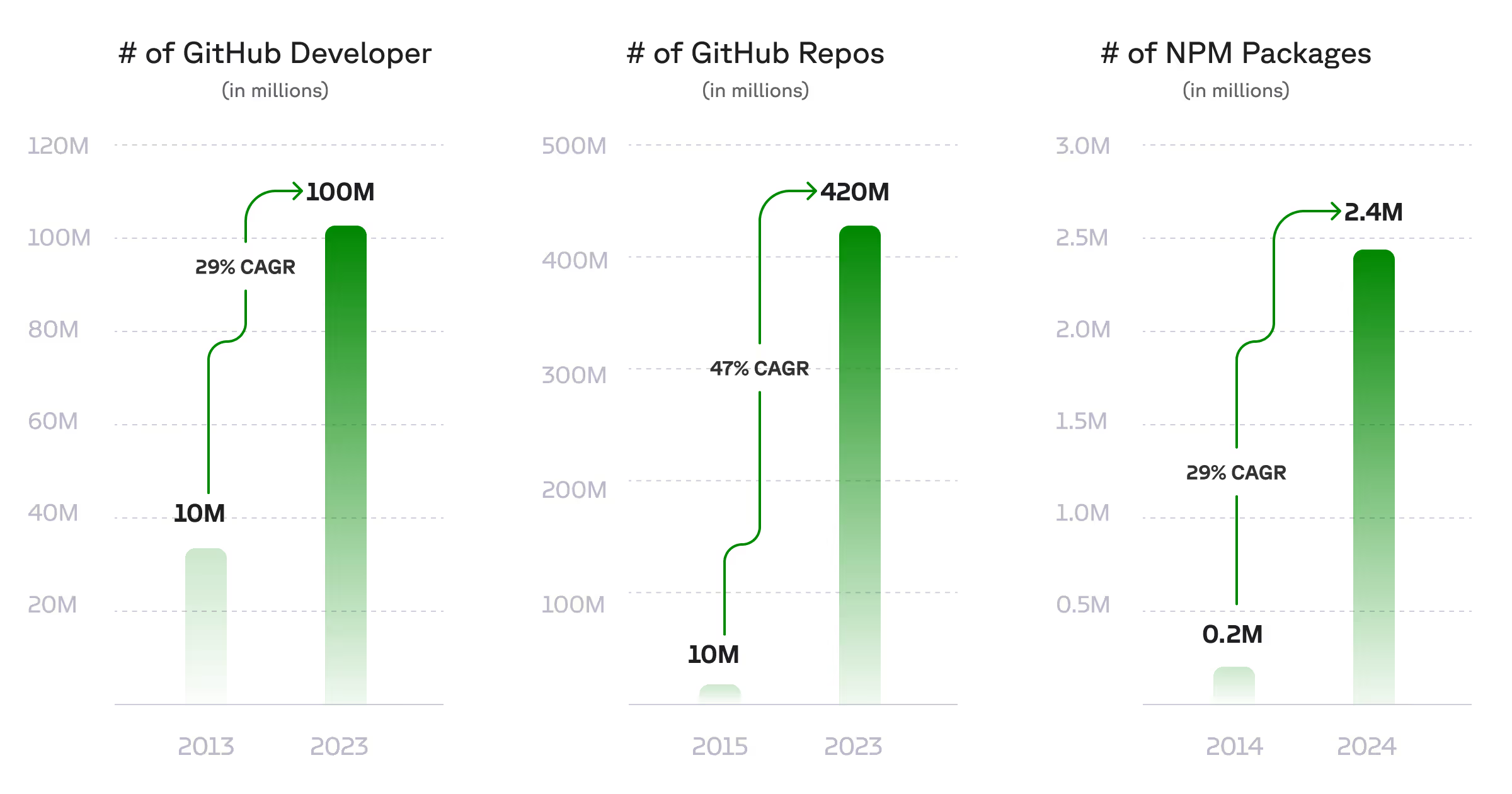
One trend stands out in particular: rapid growth in the number of APIs. This is especially relevant to documentation, whose primary purpose is to describe and guide usage of these interfaces. Several forces are driving this shift—most notably, the move from monolithic architectures to microservices and the proliferation of API types like REST, GraphQL, and gRPC.
Shift from monolithic architecture to microservices
The explosion in APIs is tightly linked to the shift that shouldn't be surprising to any developer: the shift from monolithic architecture to microservices.
In a monolithic app, everything lives in one big codebase—routing, business logic, data access, all bundled together. It works fine early on, but once things scale, it turns into a mess: hard to update, harder to deploy, and a nightmare to onboard new engineers.
Microservices break that apart. Each service owns a small piece of the puzzle and communicates with other services via APIs.
Every new microservice needs a well-defined API so the rest of the system knows how to talk to it. That means more endpoints leads to more docs.
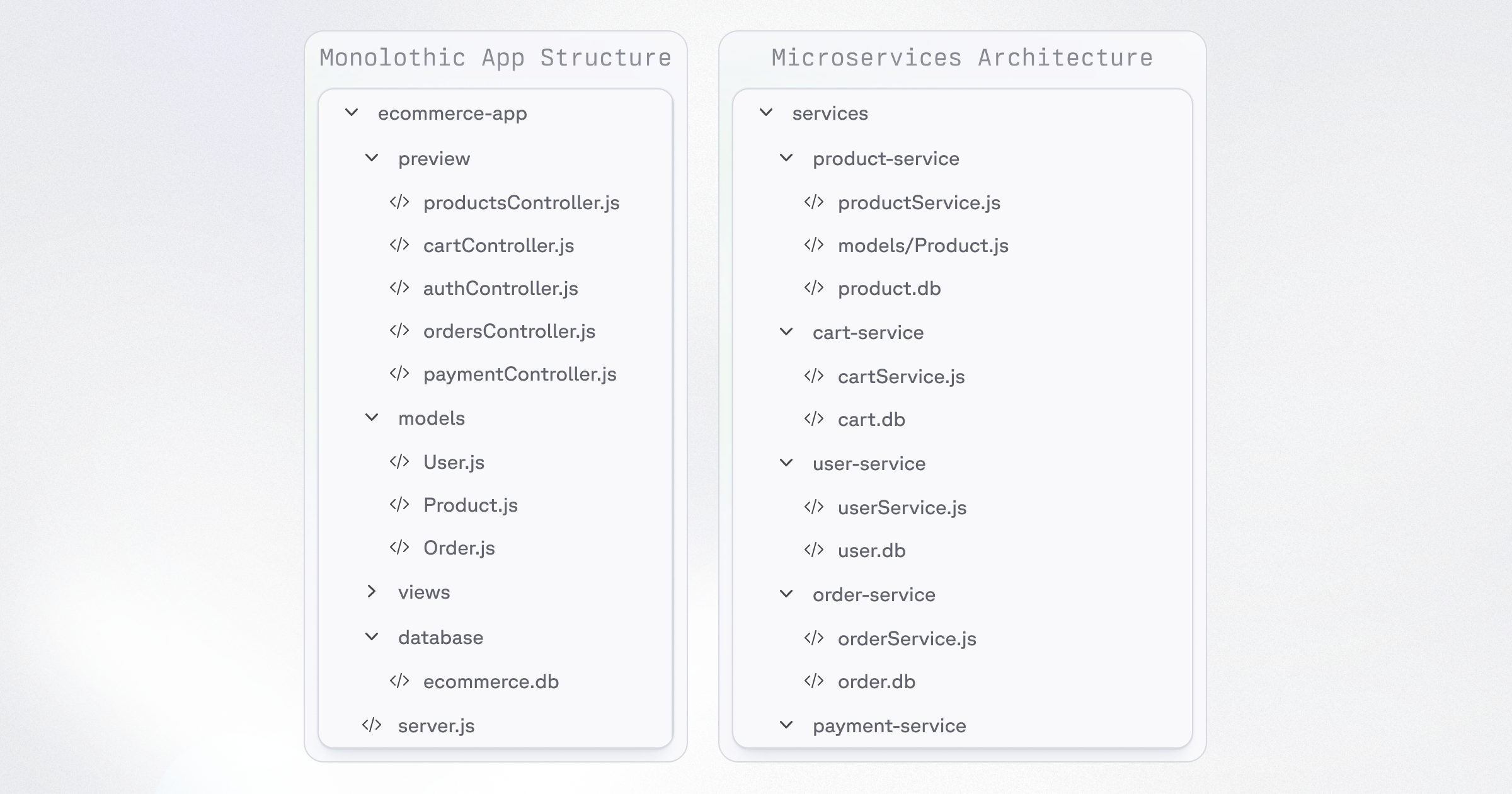
More communication layers between APIs
While REST was the predominant API endpoint years ago, we’ve seen the emergence of new API formats that have gained popularity. As systems have become more complex and real-time, the ‘one side fits all’ model of REST no longer is the best fit for all use cases.
As a result API types like WebSockets and gRPC have unlocked new ways of building software that might not have been possible 20 years ago. Applications like Figma’s visual editors (WebSockets), Netflix stream (gRPC), or Stripe payments (AsyncAPIs) are all examples of new software being built…and each of these protocols needs documentation!
2) Every company is becoming a software company
If you look ten years ago, the only companies that had built extensive developer documentation were API-first products—think Twilio and Stripe. Most large enterprises had built software internally, but few were actually exposing API endpoints to customers.
Fast forward ten years and this dynamic has completely flipped on its head. Whether you’re an airline offering an endpoint to track luggage, or gig economy marketplace offering integrations into your platform, external API adoption has exploded.
As a result, we’re seeing adoption amongst F500 companies that you’d think would have nothing to do with software. Here are a few of our favorite examples we’ve come across:
- Constellation Brands (owner of Conora and Pacifica): ‘Bottle Shots API’ that returns promotional digital assets
- Kroger: ‘Product API’ that provides a list of all Kroger products to gig economy platforms like DoorDash and UberEats
- Delta: ‘Shopping API’ that allows third-party travel platforms to look at flight prices, availability, and other information
We expect this trend to accelerate as companies across every industry work to make their products more interoperable with AI agents and modern software ecosystems. AI agents, in particular, will rely on well-documented APIs to interact with services autonomously—whether it's booking a flight, placing a grocery order, or pulling product metadata.
3) Docs becoming the platform for developer experience
Documentation is rapidly evolving from static reference material into a dynamic platform that powers critical developer workflows and AI-powered tooling. We’re seeing more and more features that are transforming docs into something much greater. In some cases, a company’s documentation is the primary product interface—driving discovery, onboarding, and adoption without ever talking to sales. A few of those features are:
a) SDK generation
Starting with the same API spec used to generate documentation, companies can also automatically generate and maintain SDKs in multiple programming languages. Just like with docs, this removes the need to manually update SDKs every time the API changes—saving time, reducing errors, and keeping everything in sync by design.
b) AI search
Documentation can often consist of 100s of pages; while using sidebar navigation can be effective, it does take time to get where you want. Many AI-enabled search or chatbots can instantly orient users to the right pages, in addition to answering questions that traditionally would get routed to support.
c) AI technical writers
Just like AI search tools help users navigate documentation faster, AI technical writers help teams produce documentation more efficiently. Companies like Promptless or Quantstruct will update user-facing documentation triggered from any content changes in Slack, GitHub, and other sources.
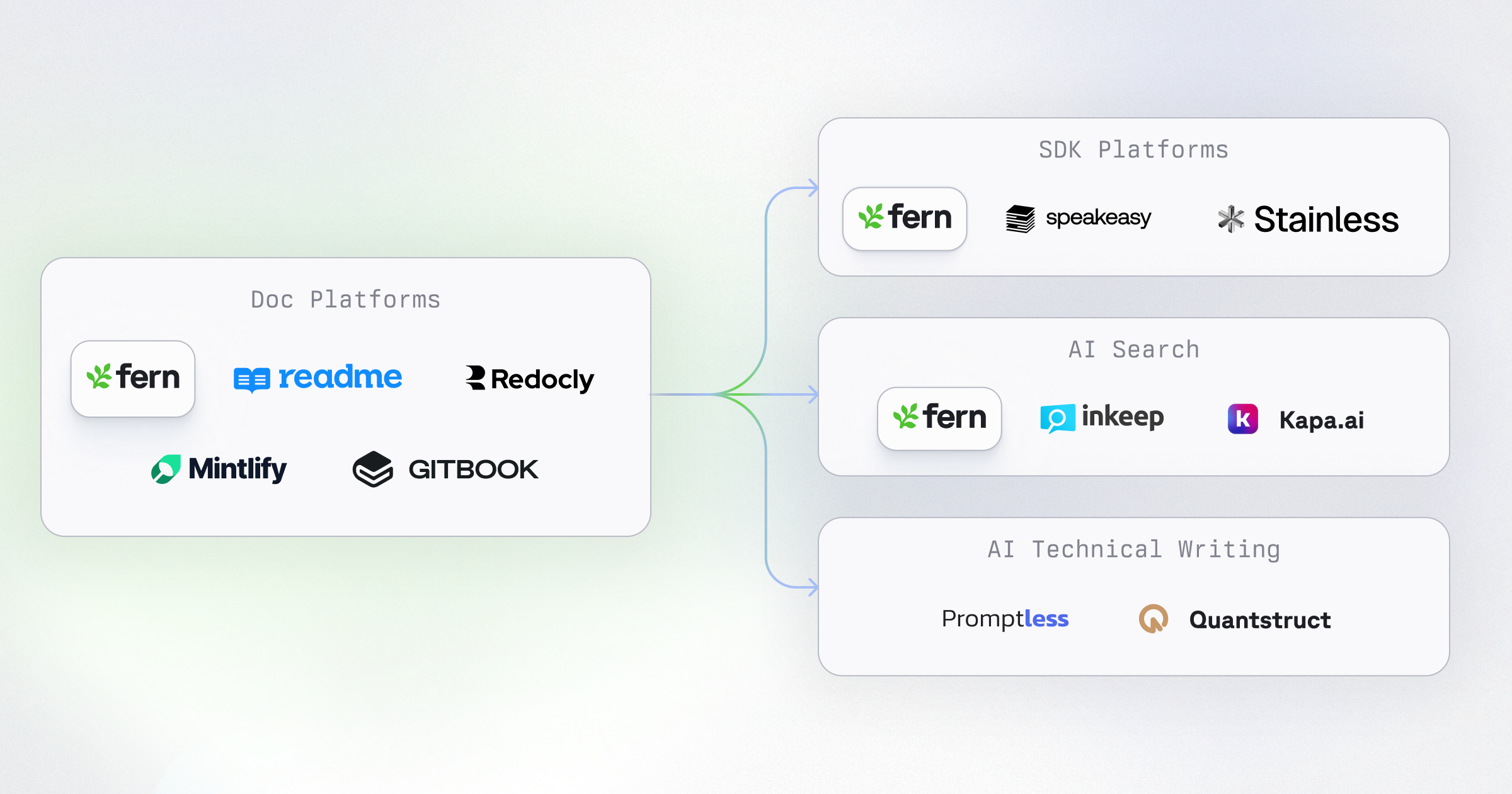
4) Docs are becoming the ‘sales rep’ for agents
Traditionally, engineers will be the ones making the de facto decisions on tooling. What happens when agents are the ones calling the shots?
Agents won’t pick up the phone or schedule meetings with an AE. Instead, they’ll “read” your documentation to understand what your API can do, how to authenticate, what data to send, and how to interpret responses. Competitive matrices will go out the window, and ‘doing’ will become the best source of trust.
Well-structured, clear, and up-to-date docs become the virtual sales reps—building trust, reducing friction, and enabling agents to take action confidently.
If your documentation is incomplete, outdated, or confusing, it’s like having a silent, unhelpful sales rep. The agent may make mistakes, give up, or simply avoid your API altogether. Conversely, stellar documentation can accelerate adoption, drive usage, and even open new opportunities by enabling intelligent agents to integrate your services autonomously.
In this new paradigm, documentation is not just support content—it’s the front line of engagement and conversion in an increasingly agent-driven world.
Great documentation is the product
Developer documentation has moved from the sidelines to the center of the software experience. It’s no longer just a helpful resource—it’s a critical layer of your product, your platform, and your go-to-market strategy. As software development accelerates, APIs proliferate, and intelligent agents take a front seat, clear and dynamic documentation will define how developers discover, evaluate, and adopt your tools.
The companies that treat docs as a strategic asset (not an afterthought) will be the ones who win developer trust, adoption, and market share. Whether it’s powering SDKs, serving as the interface for agents, or simply helping a human get started faster, great documentation is no longer optional. It’s the product.

